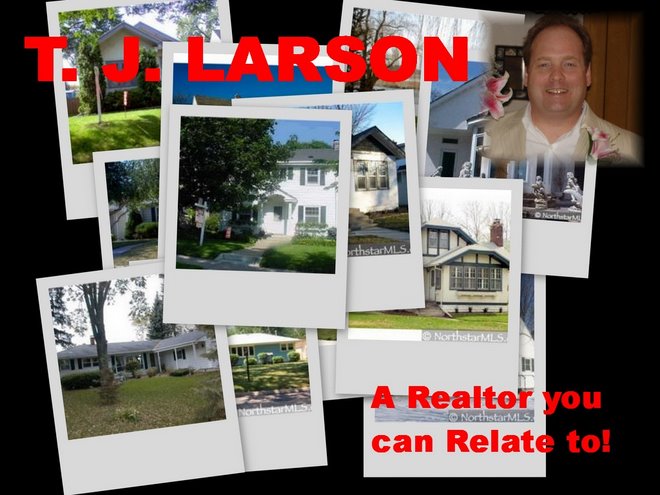Urban flight is a MYTH.
More and more people realize the benefits of living in the urban core of the Twin Cities.
And why not? What with all of the tremendous variety of arts, restaurants, night clubs, shops, parks, lakes...Minneapolis and St. Paul really has it all AND you don't have to drive in a soul crushing freeway commute if you live and work in the city.
After years of "white flight" to the suburbs, Minneapolis and St. Paul are leading a nationwide urban comeback.
Kathy Arnell didn't have just your typical annoying 45-minute commute from Champlin to Minneapolis. When Arnell, a registered nurse, was on call for 24 hours at a time, sometimes she made the commute twice in one day.
"When our children graduated from high school," said her husband, Brian, "we were gone -- and we haven't looked back."
Today it's a quick hike to work for both of them from their new downtown loft, with its 17-foot ceilings and breathtaking views of a glittering Minneapolis skyline and summertime fireworks along the Mississippi River.
With that move, the Arnells became part of what's shaping up as one of the nation's most remarkable urban comebacks. By two key measures -- rising home values and attractiveness to affluent white families -- Minneapolis and St. Paul rank among the few cities rebounding so far this decade, census figures show.
Among the nation's 40 biggest metro areas, both cities rank among the top five in value increase of owner-occupied homes, according to a research team at the University of Virginia. And both are among the top 10 in the rate of increase in the median income of white families -- a key indicator for sociologists tracking the return to cities of well-heeled folks blamed for "white flight."
Not everyone is celebrating. Property taxes and foreclosures are rising. Houses with a history are being bulldozed for what some call "monster homes." Homes that immigrants could buy for $40,000 in the late 1990s now cost more than four times as much. Affordable rentals are being converted to condos. Poverty is rising in the suburbs, faster than in most metro areas nationwide.
Overall, a plus
But analysts tracking these changes say the side effects can be managed, and the upgrade in the end is worth it.
"Suburbs have been eating the cities' lunch for so long that when you see it going in a different direction suddenly, your first impulse is to think there's something 'wrong' here," said Alan Berube, research director for the Metropolitan Policy Program at the Brookings Institution in Washington. That's "because nothing in your lifetime has gone right in the city. But I don't think something bad is happening here. It's a rediscovery of urban assets that have been undervalued for decades."
Call it a coastal effect
Today Minneapolis and St. Paul are benefiting from some parallel trends, including an overheated housing market on both coasts.
"In Santa Barbara today, a million dollars gets you a dump, a shack," said Jennifer Newton, a 34-year-old writer, who along with her husband, Christopher, a 33-year-old computer programmer, bailed out in 2004.
Weary of paying nearly $2,000 a month for a nothing-special apartment in Southern California, the couple drew up a 13-point list of needs and launched a quest for an American city that could fulfill them.
They landed on a street called Margaret, on St. Paul's East Side, paying $199,000 for a house that had changed hands 12 years earlier for $68,000. Today the couple proclaim themselves "deliriously happy transplants." They've bought ice skates and find the rink next to St. Paul's stately Landmark Center to be practically European in its winter magic.
Less crime, more culture
Some factors behind the rebound are true of many cities nationwide. Crime has eased since the early 1990s. Downtown cultural attractions have multiplied. Older baby boomers are returning to city life after raising kids in the suburbs -- and the kids themselves are choosing cities, too.
If the rebound is faster here than most places, experts say, the factors probably include:
Kathy Arnell didn't have just your typical annoying 45-minute commute from Champlin to Minneapolis. When Arnell, a registered nurse, was on call for 24 hours at a time, sometimes she made the commute twice in one day.
"When our children graduated from high school," said her husband, Brian, "we were gone -- and we haven't looked back."
Today it's a quick hike to work for both of them from their new downtown loft, with its 17-foot ceilings and breathtaking views of a glittering Minneapolis skyline and summertime fireworks along the Mississippi River.
With that move, the Arnells became part of what's shaping up as one of the nation's most remarkable urban comebacks. By two key measures -- rising home values and attractiveness to affluent white families -- Minneapolis and St. Paul rank among the few cities rebounding so far this decade, census figures show.
Among the nation's 40 biggest metro areas, both cities rank among the top five in value increase of owner-occupied homes, according to a research team at the University of Virginia. And both are among the top 10 in the rate of increase in the median income of white families -- a key indicator for sociologists tracking the return to cities of well-heeled folks blamed for "white flight."
Not everyone is celebrating. Property taxes and foreclosures are rising. Houses with a history are being bulldozed for what some call "monster homes." Homes that immigrants could buy for $40,000 in the late 1990s now cost more than four times as much. Affordable rentals are being converted to condos. Poverty is rising in the suburbs, faster than in most metro areas nationwide.
Overall, a plus
But analysts tracking these changes say the side effects can be managed, and the upgrade in the end is worth it.
"Suburbs have been eating the cities' lunch for so long that when you see it going in a different direction suddenly, your first impulse is to think there's something 'wrong' here," said Alan Berube, research director for the Metropolitan Policy Program at the Brookings Institution in Washington. That's "because nothing in your lifetime has gone right in the city. But I don't think something bad is happening here. It's a rediscovery of urban assets that have been undervalued for decades."
Call it a coastal effect
Today Minneapolis and St. Paul are benefiting from some parallel trends, including an overheated housing market on both coasts.
"In Santa Barbara today, a million dollars gets you a dump, a shack," said Jennifer Newton, a 34-year-old writer, who along with her husband, Christopher, a 33-year-old computer programmer, bailed out in 2004.
Weary of paying nearly $2,000 a month for a nothing-special apartment in Southern California, the couple drew up a 13-point list of needs and launched a quest for an American city that could fulfill them.
They landed on a street called Margaret, on St. Paul's East Side, paying $199,000 for a house that had changed hands 12 years earlier for $68,000. Today the couple proclaim themselves "deliriously happy transplants." They've bought ice skates and find the rink next to St. Paul's stately Landmark Center to be practically European in its winter magic.
Less crime, more culture
Some factors behind the rebound are true of many cities nationwide. Crime has eased since the early 1990s. Downtown cultural attractions have multiplied. Older baby boomers are returning to city life after raising kids in the suburbs -- and the kids themselves are choosing cities, too.
If the rebound is faster here than most places, experts say, the factors probably include:
• One of the nation's fastest rising levels of traffic congestion, frustrating folks long accustomed to easy mobility.
Scott Hughes works in construction management and is often on the road. He and his fiancée -- he's from Burnsville and she's from Bloomington -- landed in south Minneapolis partly because when traffic is thickest, "I am usually going the opposite direction," Hughes said. "And when I have to head downtown, I am already close."
• A high percentage of older homes.
Character and craftsmanship are often mentioned as important draws by recent buyers in city neighborhoods, and University of Virginia researcher William Lucy has documented that, city or suburb, the presence of pre-World War II homes is a huge draw.
Lauren Mihajlov, a marketing manager, said she left Champlin for the Cedar Lake area of Minneapolis partly for "a house with character that's not like every other in the neighborhood. ... Between the commute and the 'five-styles-of-homes-available-in-this-development' -- all beige! -- I thought I was going to lose my mind."
• Aggressive spending by state and regional agencies, as well as nonprofit groups and corporations.
On the Minneapolis riverfront alone, "the level of public investment was huge," said Mark Bjelland, a geographer at Gustavus Adolphus College in St. Peter, Minn., who has studied the transformation. Riverfront land now occupied by lawyers and corporate executives, he recalls, was once considered so worthless that its owners gave it to the government rather than pay taxes on it.
Understanding the risks
Crime and city schools remain hurdles for many, and cause some to leave after making the jump. But most people understand that going in.
Cyndi Harper and her husband, who make more than $100,000 a year between them, left their Roseville apartment in the fall of 2000 for a first home in the Willard-Hay area of north Minneapolis.
"My husband's brother and his family were living six blocks away, so we knew what we were getting into," she said. A big attraction was the price: "We would have paid $100,000 more for the same house in another neighborhood."
Six years later? "So far, so good. We are happy with where we live."
If you are considering a move, contact me today and I can help you get started!


No comments:
Post a Comment